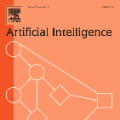Recent breakthroughs in artificial intelligence (AI) are reshaping the way we construct computational counterparts of the brain, giving rise to a new class of ``surrogate brains''. In contrast to conventional hypothesis-driven biophysical models, the AI-based surrogate brain encompasses a broad spectrum of data-driven approaches to solve the inverse problem, with the primary objective of accurately predicting future whole-brain dynamics with historical data. Here, we introduce a unified framework of constructing an AI-based surrogate brain that integrates forward modeling, inverse problem solving, and model evaluation. Leveraging the expressive power of AI models and large-scale brain data, surrogate brains open a new window for decoding neural systems and forecasting complex dynamics with high dimensionality, nonlinearity, and adaptability. We highlight that the learned surrogate brain serves as a simulation platform for dynamical systems analysis, virtual perturbation, and model-guided neurostimulation. We envision that the AI-based surrogate brain will provide a functional bridge between theoretical neuroscience and translational neuroengineering.
翻译:暂无翻译




